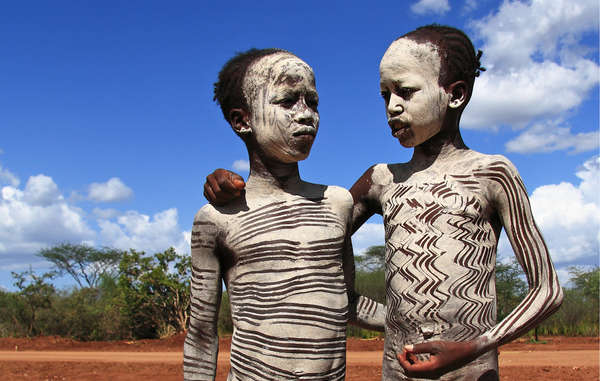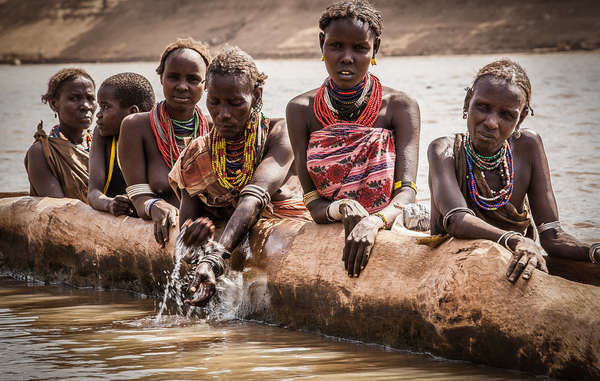by Deep Green Resistance News Service | Mar 13, 2016 | Toxification
Featured image: A huge proportion of the Nahua tribe have been affected by the poisoning, which causes anemia and acute kidney problems © Johan Wildhagen
By Survival International
Up to 80% of a recently-contacted tribe in Peru have been poisoned with mercury, raising serious concerns for the future of the tribe. One child has already died displaying symptoms consistent with mercury poisoning.
The source of the Nahua tribe’s poisoning remains a mystery, but experts suspect Peru’s massive Camisea gas project, which opened up the tribe’s land in the 1980s, may be to blame. The project has recently been expanded further into the Nahua’s territory, prompting fierce opposition from the tribe.
Rampant illegal gold mining in the region is another potential source of the mercury poisoning.
The Nahua, who live inside a reserve for isolated Indians in south-east Peru, have also been suffering from acute respiratory infections and other health problems since they were contacted.
Other indigenous communities in the area may also have been affected by mercury contamination, but tests have not been carried out. Some of these communities are uncontacted or extremely isolated. It is understood that the Peruvian Health and Environment Ministries have been aware of the problem since 2014.
AIDESEP, the main indigenous organization in Peru’s Amazon, is lobbying the government to carry out full health checks on the Nahua and other tribes in the area, and to conduct a proper investigation into the cause of the poisoning. A study was conducted by the Ministry of Health in spring 2015, but the results have yet to be published.
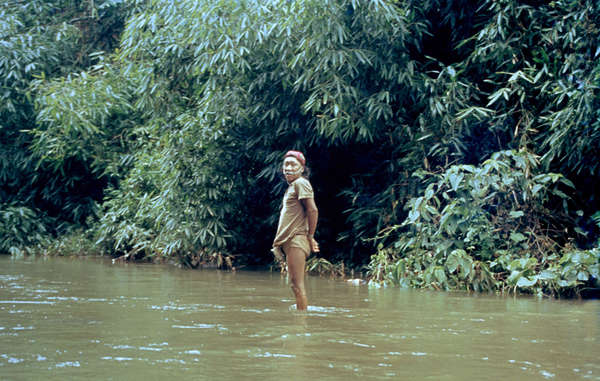
The Nahua were first contacted in the 1980s. Subsequent epidemics killed many members of the tribe
© Survival International
Nery Zapata, an indigenous leader, said: “Mercury contamination is extremely damaging to human health because its effects are irreversible. The health department must investigate this, and stop the contamination that is poisoning the indigenous population.”
Survival has also written to the Peruvian Ministries of Health and Culture urging them to publish the results of their study and put an end to the catastrophe.
Survival’s Director Stephen Corry said: “The Peruvian authorities have always been pretty indifferent to the problems facing their indigenous communities, and the total neglect they’ve shown in this case just proves it. Had this poisoning taken place in Lima, I don’t expect they would have been quite so casual in their response, or as slow to publish the results of their earlier findings. It’s nothing short of scandalous that they are not doing more to sort out this crisis. It’s also very telling that they are withholding information about it from the public.”
by Deep Green Resistance News Service | Mar 10, 2016 | Biodiversity & Habitat Destruction, Movement Building & Support
By Wildlands Defense
Two months have gone by in a blur since the Bundy Militant Seizure of Malheur National Wildlife Refuge. The Refuge was taken under the cover of cowboy hats. Public lands ranchers have always been at the front of western land grab efforts, as Bernard DeVoto described.
Malheur brought unsavory players engaged in a medusa-headed effort to seize control of public lands into full public view. Proliferating militias, “constitutional sheriffs,” and various crackpot lecturers were suddenly out in public view, all on board with the land privatization agenda.
WLD’s Natalie Ertz and Kate Fite traveled to Malheur to join a Protest opposing the Bundy Seizure. We hiked on the Refuge, where Militants “on patrol” attempted to intimidate us. We met up with the Center for Biological Diversity folks who had been at Malheur for many days, and several other Boise people who came out for the event. (3rd video)
We had the privilege to speak with leaders of the Burns-Paiute Tribe. We witnessed a surreal Militant ceremony where New Mexico rancher Adrian Sewell renounced his grazing permit. At the end of this, Pete Santilli tried to incite an armed crowd against an environmentalist by claiming he was an FBI agent.
Just as we returned home, we learned of a Land Seizure Conference in Boise only a few days away – “Storm Over Rangelands”, with Kanosh Utah attorney Todd MacFarlane, a member of the militia-like Harney County Committee of Safety, and others.
We worked to organize a Protest march, and documented the
conference, which preached there is no such thing as public land – grazing on BLM land establishes a “right” for the cattlemen, so the land is no longer public.
Members of the Bundy Cowliphate have now been arrested. But the Land Seizure movement remains in high gear. The fight to protect public lands is now more important than ever. At least three Bills have been introduced in the Congress to give states control of federal lands.

Cottonwood creek – Owyhee Field Office, Idaho BLM. Monitoring cage illustrates typical degree of forage removed by livestock that would otherwise stabilize stream-banks, purify water, and be available to wildlife. (Photo: Brian Ertz)
There are myriad other efforts chipping away at public lands and public lands protections in Congress and state Legislatures across the West.
This is a very important time in the fight to protect wild lands and wildlife in the west. Please support our frontline efforts to protect public lands.
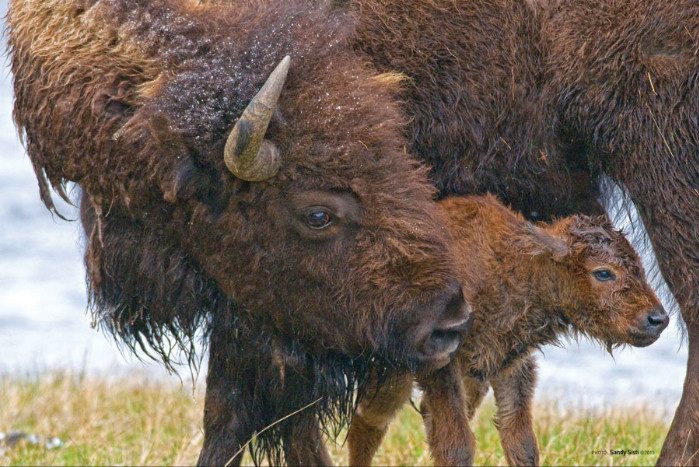
by Deep Green Resistance News Service | Mar 7, 2016 | Biodiversity & Habitat Destruction
By Buffalo Field Campaign
SPECIAL ALERT: Phone Calls Needed Today to Stop Imminent Buffalo Slaughter
Yellowstone National Park is holding approximately 150 of America’s last wild buffalo captive in their Stephens Creek bison trap. The Park Service intends to ship these gentle giants to slaughter facilities beginning this week! Why does Yellowstone slaughter America’s last wild buffalo? Because Montana’s livestock industry pressures them to. There is no justification for it, no matter what the Park Service tells you. Wild bison are not overpopulated, and the so-called brucellosis threat is a livestock industry excuse to kill wild buffalo and prevent them from reinhabiting their native landscape.
So many of you have been taking action, calling Yellowstone National Park, and urging them to set these buffalo free. Thank you so much! Unfortunately, Yellowstone has been unresponsive. Yellowstone’s superintendent still needs to hear from you, but we need to increase our pressure and take our message all the way up to the White House. We also need to contact Montana Governor Steve Bullock and tell him to end livestock industry authority over wild, migratory bison, which is the driving force behind Yellowstone’s participation in the slaughter of America’s last wild buffalo.
PLEASE TAKE ACTION TODAY!
* CALL PRESIDENT OBAMA AT THE WHITE HOUSE: #202-456-1111
Tell President Obama to make Yellowstone stop the buffalo slaughter and set the captive buffalo free! There is no justification for killing members of the world’s most important bison population, beloved the world over. Tell the President you do not want your hard-earned tax dollars to be spent on destroying a natural, national treasure.
* CALL MONTANA GOVERNOR STEVE BULLOCK: #406-444-3111
Tell him you stand with the majority of Montanans who want wild, migratory bison restored in this state. Tell him bison slaughter hurts tourism, and insist that he work to end livestock industry policies and intolerance, which are the driving force behind Yellowstone’s participation in the slaughter of America’s last wild buffalo.
* CALL YELLOWSTONE’S SUPERINTENDENT DAN WENK: #307-344-2002
Demand that he cease catering to livestock industry intolerance, release the captured buffalo, and end plans to slaughter! His willing participation in slaughtering America’s last wild buffalo goes against the National Park Service’s mission and Yellowstone’s own bison science!
Thank you so much for taking these actions for the country’s last wild buffalo!
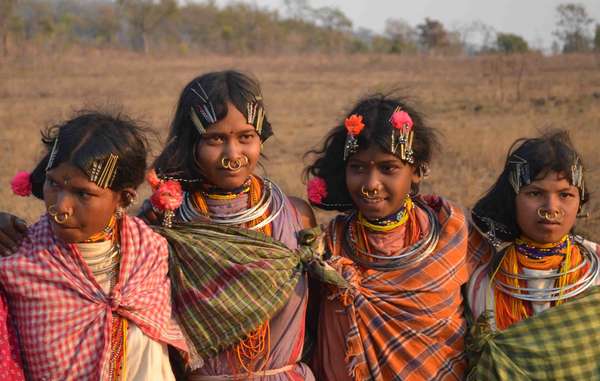
by Deep Green Resistance News Service | Mar 1, 2016 | Indigenous Autonomy, Mining & Drilling
Featured image: The Dongria unanimously rejected the mining project and have vowed to protect the Niyamgiri hills © Bikash Khemka/Survival International
By Survival International
A tribe in eastern India are facing a new threat from mining on their ancestral land, despite having won a major “David & Goliath” legal battle in 2014.
The Dongria Kondh were originally threatened by international mining corporation Vedanta Resources, who tried to open a bauxite mine in their sacred Niyamgiri hills, but were prevented by the Indian Supreme Court, which ruled that the Dongria should decide whether to allow the mine to go ahead.
The tribe unanimously rejected Vedanta’s plans to mine their hills during a historic referendum in which all twelve villages that were consulted voted against the mine.
Now, however, the Odisha state is trying to re-open the issue, petitioning for the right to hold another referendum for the Dongria to pave the way for a large-scale mining operation, this time by state-run Odisha Mining Corporation.
British-owned Vedanta opened a bauxite refinery close to the Dongria’s hills without having secured permission to mine in the area. Even though the mine itself was quashed, the refinery has continued to operate at a loss.
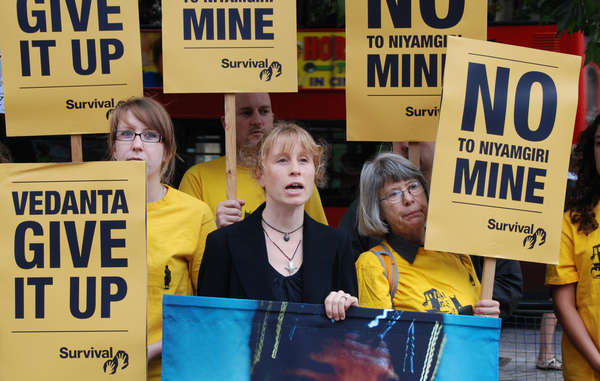
Survival campaigned against Vedanta’s plans and will continue to advocate for the Dongria’s right to protect their sacred hills.
© M. Cowan/Survival International
Despite strong resistance to the project from the Dongria, who have lived in the Niyamgiri hills for generations, the state authorities are keen to keep the refinery open and expand mining operations in the region.
Last year Mukuna Sikaka, a Dongria tribesperson, said: “We are not going to allow mining over Niyamgiri at any cost – not for all the developmental efforts of the government.”
Survival International led a successful global campaign against Vedanta’s plans, and is now calling for the Odisha state authorities to respect the Dongria’s decision to reject the mine.
Survival Director Stephen Corry said: “It is bitterly disappointing to see that the Odisha state authorities have still not learned to respect the wishes of the Dongria Kondh. Tribal peoples have a right under Indian and international law to determine what happens on their lands, yet still governments and corporations insist on putting profits before people’s wishes. Attempts to resume this project after international outcry and stern resistance from the Dongria themselves are not only un-democratic and illegal, but also deeply immoral.”
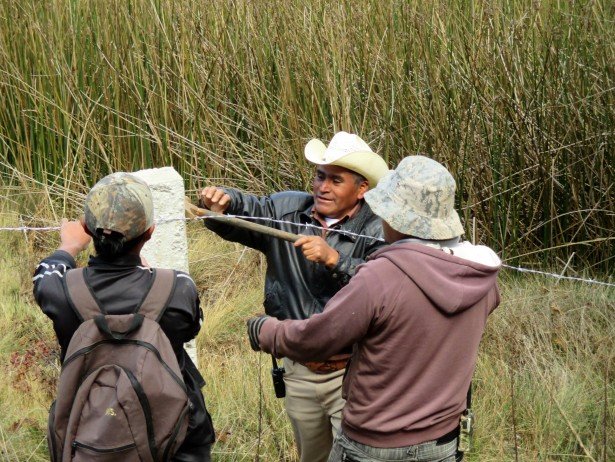
by Deep Green Resistance News Service | Feb 28, 2016 | Biodiversity & Habitat Destruction, Indirect Action
Featured image: Candelaria residents erect a fence around the Suyul Lagoon to help protect it from intruders. (Waging Nonviolence/Sandra Cuffe)
By Sandra Cuffe / Waging Nonviolence
The reeds and grasses are as tall as Sebastián Pérez Méndez, if not taller. The vegetation is so thick it’s hard to see the water in the Suyul Lagoon that he and other local Maya Tzotzil residents are working hard to protect. Pérez Méndez crosses the road to point out where aquatic plants serve as a natural filter for the water as it flows out the lagoon, located in the highlands of Chiapas, in southern Mexico.
“The water is under threat,” he said. Pérez Méndez is the top authority of the Candelaria ejido, a tract of communally-held land in the municipality of San Cristóbal de las Casas. “We’re not going to allow it.”
Communities in Chiapas are organizing to protect the Suyul Lagoon and communal lands from a planned multi-lane highway between the city of San Cristóbal de las Casas and Palenque, where Mayan ruins are a popular tourist destination. Candelaria residents continue to take action locally to protect the lagoon. They also traveled from community to community along the proposed highway route, forming a united movement opposing the project.
It all started back in 2014 when government officials showed up in Candelaria looking for ejido authorities, including Pérez Méndez’ predecessor. It was the first residents had heard about plans for the highway. The indigenous inhabitants had not been consulted and were not shown detailed plans.
“They realized that [the government officials] were only seeking signatures,” Pérez Méndez said.
No one person or group is authorized to make a decision that would affect ejido lands, however, and there are strict conditions in place to ensure elected ejido leaders are accountable to members, he explained. An extraordinary assembly was held to discuss the highway project.
The Candelaria ejido was established in 1935, a year after a new agrarian law enacted during the Lázaro Cárdenas administration led to widespread land reform throughout Mexico. More than 2,000 people live in the 1,600-hectare ejido, and more than 800 of them are ejidatarios — legally recognized communal land holders whose rights have been passed down for generations. Only ejidatarios as a whole have the power to make decisions on issues like the highway project.
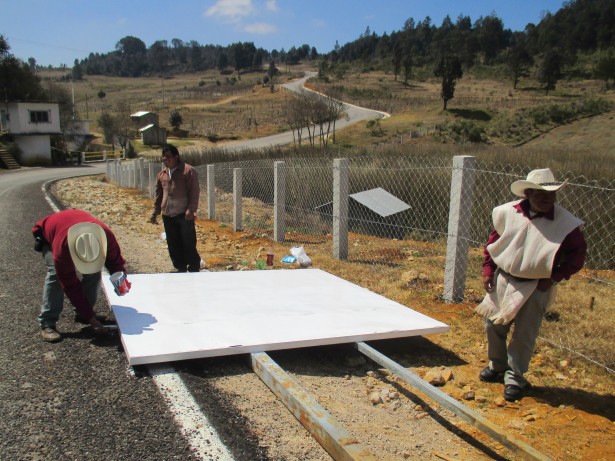
Candelaria residents paint over graffiti to fix up a roadside sign proclaiming their opposition to the highway project. (Waging Nonviolence/Sandra Cuffe)
“The ejido said no,” said Guadalupe Moshan, who works for the Fray Bartolomé de Las Casas Human Rights Center, or FrayBa, supporting Candelaria and other communities in Chiapas. “They didn’t sign.”
Candelaria leaders sought assistance from FrayBa in 2014, after they were approached by government officials and pressured to sign a document indicating their consent to the highway project that would involve a 60-meter-wide easement through communally-held lands. Officials told community members that the highway was already approved and that they would be well compensated, but that there would consequences if they refused to sign, Moshan said.
“They told them they would suspend government programs and services,” she explained. In the days following the extraordinary ejido assembly rejecting the project, there was unusual activity in the area, according to Moshan. Helicopters flew over theejido, unknown individuals entered at night, and trees were marked, she said.
Protecting the Suyul Lagoon remains at the heart of Candelaria’s opposition to the planned highway. The lagoon provides potable water not only for Candelaria, but also for several nearby communities, said ejido council secretary Juan Octavio Gómez. Aside from the highway itself, project plans eventually shown to the community leaders include a proposed eco-tourism complex right next to the lagoon. That isn’t in the communities’ interest, Gómez explained.
“Water is life. We can’t live without it,” he said. “Without this lagoon, we don’t have another option for water.”
Fed by a natural spring, the Suyul Lagoon never runs dry. Local residents are careful to protect the water and lands in the ejido, where the majority of residents live from subsistence agriculture, sheep rearing and carpentry. They engage in community reforestation, but have plans to plant more trees, Gómez said.
The Suyul Lagoon is also sacred to local Maya Tzotzil. Ceremonies held every three years in its honor involve rituals, offerings, music and dance.
“It is said that it’s the navel of Mother Earth,” Pérez Méndez said.
Candelaria residents didn’t sit back and relax after rejecting the highway project in their extraordinary assembly. They have been organizing ever since. The Suyul Lagoon lies just outside the Candelaria ejido, but it belongs to ejidatarios by way of an agreement with the supportive land owner. Aside from the highway project and potential eco-tourism complex, the lagoon has caught the attention of companies, whose representatives have turned up in the area expressing interest in establishing a bottling plant.
It’s cold in February up in the highlands, but community members have been out all day, erecting a fence around the Suyul Lagoon to protect it from intruders. White fence posts are visible under the treeline across the sea of reeds. Like so many other local initiatives, fence materials are collectively financed by the ejido and the labor is all voluntary, communal work.
While residents continue stringing barbed wire from post to post, others take paintbrushes to one of their roadside signs. Locals have erected large signs next to roads in and around their ejido, announcing their opposition to the tourist highway.
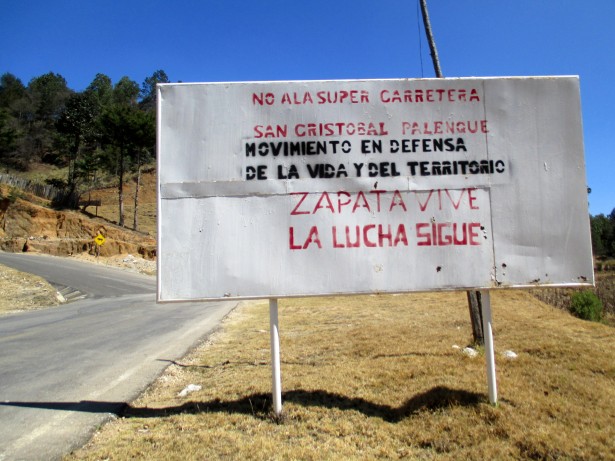
A sign along the road leading to Candelaria informs passers-by of opposition to the planned super-highway. (Waging Nonviolence/Sandra Cuffe)
“We’re also already organized with the other communities,” Pérez Méndez said. “All the communities reject the super-highway.”
After they were approached by government officials, Candelaria ejido residents traveled from community to community along the entire planned highway route. Some communities hadn’t heard of the project at all, while others said they were pressured into signing documents indicating their consent, Pérez Méndez said. As a result of Candelaria’s visits, community organizing along the highway route led to the formation of a united front of opposition, the Movement in Defense of Life and Territory.
Candelaria also recently got together with other indigenous communities in the highlands to issue a joint statement rejecting the tourist super-highway and a host of other government and corporate projects and policies.
“Our ancestors, our grandfathers and our grandmothers have always taken care of these blessed lands, and now it’s our turn to [not only take] care of the lands, but also to defend them,” reads the February 10 communiqué.
“The neoliberal capitalist system, in its ambition to exploit natural assets, invades our lands,” the statement continues. “The government and transnational companies are violently imposing their mega-projects.”
Back along the edge of the Suyul Lagoon, Candelaria residents continue to string barbed wire from post to post. They’ve been at it for a while now, according to Pérez Méndez, but they’ve now stepped up their efforts and hope to finish the fence by the end of the month.
Pérez Méndez surveys the progress, protected from the unrelenting sun and icy wind by his hat and white sheep’s wool tunic. He becomes pensive when asked if he thinks communities will be able to defeat the highway project.
“Yes,” the ejido leader said, after giving it some thought. “We can stop it.”
